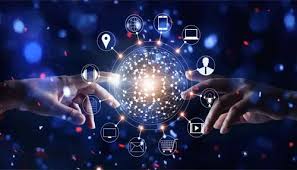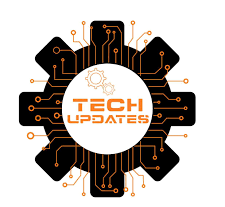Introduction
The digital revolution has become one of the most transformative forces of the 21st century. Characterized by the rapid development and adoption of digital technologies, this phenomenon has reshaped industries, redefined social interactions, and opened up new frontiers of knowledge and innovation. From the proliferation of smartphones and cloud computing to advancements in artificial intelligence and the Internet of Things (IoT), the digital revolution has touched every aspect of human life.
This article delves into the key aspects of the digital revolution, its impact on various sectors, and its implications for the future. We will also address common questions about navigating the opportunities and challenges it presents.

The Core Components of the Digital Revolution
Artificial Intelligence (AI)
AI stands at the forefront of the digital revolution, driving innovation across multiple domains. Machine learning algorithms now enable computers to analyze vast datasets, predict trends, and make decisions in real-time. Applications of AI span from voice assistants like Siri and Alexa to predictive analytics in healthcare and personalized recommendations on e-commerce platforms.
The Internet of Things (IoT)
IoT has created a network of interconnected devices that communicate seamlessly. Smart homes equipped with IoT devices optimize energy consumption, enhance security, and provide unparalleled convenience. Beyond homes, IoT is transforming industries by enabling predictive maintenance in manufacturing and improving logistics through real-time tracking.
Blockchain Technology
Blockchain technology, initially popularized by cryptocurrencies like Bitcoin, is finding broader applications in areas such as supply chain management, healthcare, and secure voting systems. Its decentralized and immutable nature offers enhanced transparency and security.
The Impact on Key Sectors
Education
The digital revolution has revolutionized education, making learning accessible to millions worldwide. Online platforms like Coursera, Khan Academy, and edX provide courses from top universities, breaking barriers of location and cost. Virtual and augmented reality tools are enhancing interactive learning experiences, bringing history, science, and art to life in classrooms.
Healthcare
Digital technologies are improving healthcare delivery and outcomes. Telemedicine platforms connect patients with doctors remotely, while wearable devices monitor vital signs and provide real-time health data. AI-powered diagnostic tools are enhancing the accuracy of disease detection, enabling early intervention and personalized treatment plans.
Business and Economy
Businesses have embraced digital transformation to improve efficiency and customer engagement. E-commerce giants like Amazon and Alibaba have reshaped retail, while cloud computing services like AWS and Azure provide scalable infrastructure for companies of all sizes. Automation and digital marketing have become essential tools for staying competitive in a digital-first economy.
Entertainment
The digital revolution has redefined entertainment, with streaming platforms like Netflix, Spotify, and YouTube leading the way. Virtual reality (VR) and augmented reality (AR) technologies are creating immersive gaming and viewing experiences. Social media platforms have also given rise to new forms of content creation and audience engagement.
Societal Changes
Connectivity and Communication
The advent of digital technologies has brought the world closer than ever before. Social media platforms, messaging apps, and video conferencing tools have made it possible to connect with anyone, anywhere, at any time. However, this hyper-connectivity has also raised concerns about data privacy and mental health.
Digital Divide
Despite its many benefits, the digital revolution has highlighted disparities in access to technology. The digital divide between urban and rural areas, as well as between developed and developing countries, remains a significant challenge. Bridging this gap is crucial to ensuring equitable access to the opportunities offered by digital technologies.
Job Market Evolution
Automation and AI are reshaping the job market, replacing routine tasks with efficient algorithms and machines. While this creates opportunities for new roles in technology, it also necessitates upskilling and reskilling to remain relevant in a rapidly changing job landscape.
Challenges of the Digital Revolution
Cybersecurity Threats
As reliance on digital systems grows, so does the risk of cyberattacks. Data breaches, ransomware, and phishing scams are becoming increasingly sophisticated, necessitating robust cybersecurity measures and awareness.
Ethical Concerns
The digital revolution raises ethical questions around data usage, surveillance, and the role of AI in decision-making. Ensuring that technology is used responsibly and does not infringe on individual rights is a pressing concern.
Environmental Impact
The energy consumption of data centers and electronic waste generated by outdated devices are significant environmental challenges. Sustainable practices and advancements in green technologies are essential to mitigating the ecological impact of the digital revolution.
The Future of the Digital Revolution
The digital revolution shows no signs of slowing down. Emerging technologies such as quantum computing, 6G networks, and bioinformatics promise to usher in a new era of innovation. Collaboration between governments, businesses, and individuals will be critical to harnessing the potential of these advancements while addressing associated challenges.
Conclusion
The digital revolution has fundamentally altered the way we live, work, and interact. It has brought immense opportunities for growth, creativity, and progress, while also posing significant challenges that require careful navigation. By embracing digital technologies responsibly and inclusively, we can build a future that leverages the best of what the digital revolution has to offer.
Frequently Asked Questions (FAQs)
Q1: What is the digital revolution? A: The digital revolution refers to the rapid development and adoption of digital technologies, transforming industries and societal interactions.
Q2: What are the main components of the digital revolution? A: Key components include artificial intelligence, the Internet of Things (IoT), blockchain technology, and advancements in communication networks.
Q3: How has the digital revolution impacted education? A: It has made education more accessible through online learning platforms and interactive tools, breaking barriers of cost and location.
Q4: What challenges does the digital revolution present? A: Challenges include cybersecurity threats, ethical concerns, environmental impact, and the digital divide.
Q5: How can we address the digital divide? A: Bridging the digital divide requires investments in infrastructure, affordable technology, and digital literacy programs.
Q6: What does the future hold for the digital revolution? A: The future includes advancements in quantum computing, 6G networks, and sustainable technologies, promising continued innovation and transformation.


